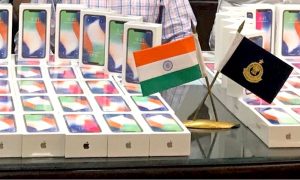Teeny Lasers Create Next-Gen Microprocessors that Require Less Power and Offer Quicker Speeds


Scientists from Hong Kong University of Science and Technology, the University of California, Santa Barbara, Sandia National Laboratories and Harvard University have successfully fabricated tiny lasers onto silicon. This is a remarkable breakthrough for the semiconductor industry, as it has been attempted to no avail for the past 30 years. The crystal lattice of silicon and laser materials simply were not able to link up. Now it is possible to quickly and effectively integrate the two materials.
The complete report was published in Applied Physicals Letters, integrating sub-wavelength cavities onto silicon allowed researchers to build and display high-density on-chip light-emitting elements. For this to be possible, they had to fix all silicon crystal lattice deformities to a degree that the cavities were equal to those grown on lattice-matched gallium arsenide (or GaAs) substrates. Nano-patterns were then formulated on top of the silicon in order to trap the defects that were making the GaAs-on-silicon template almost completely free of defects. This led to confinement of electrons within quantum dots grown on this template, allowing a laser attachment to finally take place.
Using optical pumping, the researchers were able to make the devices work as lasers. Optical pumping is a process where light (versus electrical currents) push electrons from a lower energy level into an atom or molecule of a higher level.
Professor Kei May Lau from the Department of Electronic and Computer Engineering at Hong Kong’s University of Science and Technology says putting lasers on microprocessors boosts their capabilities and allows them to run at much lower powers, which is a very large step towards photonics and electronics integration on the silicon platform. Most commonly, the lasers are used for commercial purposes on a massive scale, at about 1 mm by 1 mm.
Small lasers often acquire big amounts of mirror loss. However, scientists were able to bypass this common problem with very small gallery mode lasers that are only 1 micron in diameter and 1,000 times shorter in terms of length. They are actually 1 million times smaller in surface area than those commonly in use.
Whispering gallery mode lasers are considered a very attractive light source for on-chip optical communications, data processing and also chemical sensing applications. Lau says their lasers have a very low threshold and match the required sizes in order for them to be integrated onto a microprocessor. These lasers are high-performance and may grow directly on silicon wafers. These lasers can be directly applied to the high-speed data communications industry.
Professor Kei May Lau says photoonics is the most energy-efficient and affordable method to use in when it comes to transmitting large amounts of data over large distances. Up until the group’s research, laser light sources for similar applications were only possible “off-chip”. Lau’s work allows the integration of on-chip lasers, a very useful component, with other silicon photonics and microprocessors.
The new technology should become visible on the market within the next 10 years, but before that the team plans to work solely on electrically pumped lasers using a standard microelectronics technology.









